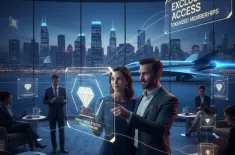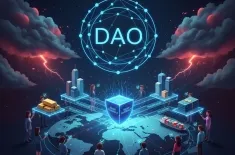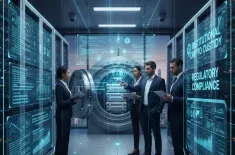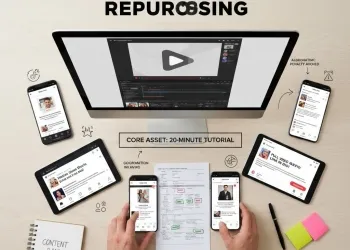Learn how smart contracts and community voting refine DAO governance to manage large, transparent treasury and decentralized investing.
Decentralized Autonomous Organizations (DAOs) represent one of the most profound paradigm shifts in organizational structure since the invention of the corporation. Born from the principles of blockchain technology, DAOs leverage code and cryptographic certainty to replace traditional, hierarchical decision-making with a collective, transparent, and automated system. They function without a central authority—no CEO, no board of directors—with governance rules entirely encoded in **smart contracts**.
The journey of the DAO has been one of rapid, often turbulent, evolution. From the initial, experimental ventures in the early days of Ethereum to the sophisticated structures now managing billions in assets, DAOs have navigated technical exploits, community crises, and the persistent challenge of effective **DAO governance**. Today, they are moving beyond the purely digital realm of **decentralized finance (DeFi)** and into real-world applications, fundamentally changing how large treasuries are managed and how investment decisions are made.
The Genesis: From Concept to Code
The foundational concept of a self-governing, code-enforced entity emerged from the very first blockchain, Bitcoin. While Bitcoin itself is a kind of proto-DAO, its singular, rigid function makes it distinct. The true birth of the DAO as a programmable, general-purpose organization began with the advent of Ethereum and its ability to host **smart contracts**—self-executing agreements with the terms of the agreement directly written into code.
The First DAO and the Great Crisis
The earliest and most infamous instance was "The DAO" in 2016. It was designed as a **decentralized investing** vehicle, pooling capital to fund projects voted on by token holders. It rapidly raised a staggering $150 million, becoming the largest crowdfunding campaign at the time.
The DAO demonstrated the revolutionary promise of the concept: an organization operating with unprecedented **transparent treasury** management, where every transaction and vote was verifiable on-chain. However, a critical vulnerability in its **smart contract** code led to a massive exploit, resulting in the theft of millions of Ether. This crisis forced a deep philosophical split in the Ethereum community, culminating in a controversial hard fork to retrieve the funds.
The "DAO Hack" was a pivotal moment. It didn't kill the concept; instead, it acted as a global-scale stress test, highlighting the absolute necessity of smart contracts security, robust **DAO governance** frameworks, and the complex human element within autonomous systems.
The DeFi Revolution and Maturation
Following the initial setback, the DAO concept retreated, only to re-emerge stronger and more specialized during the rise of **decentralized finance (DeFi)**. DeFi protocols—platforms for lending, borrowing, and trading without intermediaries—discovered that DAOs were the perfect fit for their organizational structure.
Protocol DAOs and Treasury Management
Today, the largest DAOs are often the **governance** structures for major DeFi protocols like Uniswap, Aave, and MakerDAO. Their **DAO governance** tokens grant holders the right to vote on key parameters, such as fee structures, interest rates, and protocol upgrades.
A key area of evolution has been **transparent treasury** management. Early DAOs often held only their native governance token, creating a high-risk scenario where the DAO's operational capital was entirely reliant on its own token's volatile price. The maturation phase brought a shift to sophisticated, diversified asset management:
- Diversification: DAOs now strategically diversify their multi-billion dollar treasuries into stablecoins (to cover operational costs), "blue-chip" crypto assets (like Bitcoin and Ethereum for long-term reserves), and even yield-generating strategies within **DeFi**.
- Specialized Teams: To manage this complexity, many DAOs have established sub-groups or "committees"—often known as Pods or Working Groups—composed of experts in risk management and portfolio strategy. These groups propose detailed strategies that are then ratified via **community voting** by the full DAO. This delegates *expertise* while retaining *ultimate decision-making* power in the hands of the decentralized token holders.
- On-Chain Accounting: Advanced dashboards and specialized tools have emerged to provide real-time, public, and on-chain accounting, making the **transparent treasury** not just a philosophical goal but a verifiable reality.
Refinement in Governance Models
The classic "one token, one vote" model, while simple and transparent, quickly revealed shortcomings, primarily the risk of plutocracy where a small number of large token holders could dictate all decisions. The evolution of **DAO governance** has focused intensely on mitigating this power concentration and improving participation:
Token-Weighted Voting Enhancements
- Delegation: To combat voter apathy and concentrate expertise, most major DAOs now support **delegation**. Token holders who don't have the time or expertise to vote on every proposal can delegate their voting power to a "delegate" who is more informed, without giving up ownership of their tokens. This creates an accountable, representative democracy layer within the DAO structure.
- Voting Quorums and Time-Locks: To prevent hurried, manipulative, or low-turnout votes, mechanisms like mandatory minimum participation thresholds (quorums) and time-locks (delaying the execution of a passed vote) have been implemented. These security measures are hard-coded into the **smart contracts** to protect the DAO’s funds and protocol integrity.
Alternative Governance Structures
Moving beyond simple token-based models, new forms of **DAO governance** have emerged to address specific needs:
- Holacracy/Sociocracy-Inspired Models: Some DAOs adopt modular structures with interconnected working groups, each responsible for specific domains (e.g., development, marketing, legal). This allows for faster, more localized decisions within the group's scope while reserving major policy changes for overall **community voting**.
- Reputation-Based Governance: In certain Social or Service DAOs, voting power can be earned through verifiable contributions and work history rather than purely financial stake. This shifts the incentive from capital accumulation to active, valuable participation.
Moving Beyond Crypto: Real-World Applications
The next frontier for DAOs is bridging the gap between the purely digital asset world of **DeFi** and tangible, real-world applications. The core value proposition—decentralized control over a shared asset pool—is now being applied to non-blockchain assets.
Real-World Asset (RWA) Investment
The most significant trend involves DAOs using their large, diversified treasuries to invest in Real-World Assets (RWAs). This not only offers diversification away from the volatility of the crypto market but also integrates the trustless system of a DAO with traditional financial and legal systems.
- Tokenized Assets: DAOs are utilizing legal wrappers and tokenization protocols to hold assets like real estate, corporate debt, and U.S. Treasury bills. For instance, a DAO might use its capital to purchase a tokenized stake in a portfolio of commercial real estate.
- Legal Compliance: The creation of legal entities—like the Wyoming DAO LLC—is a crucial development. These entities act as the legal interface for the DAO, allowing the decentralized organization to own traditional assets, sign contracts, and manage regulatory liabilities, a necessity for managing large, non-crypto investments.
Decentralized Investing and New Ventures
DAOs are functioning as next-generation venture capital funds and collective investment trusts, fundamentally democratizing access to capital and investment opportunities.
- Investment DAOs: These DAOs pool member funds for **decentralized investing** in early-stage startups, NFTs, and other high-growth ventures. Members vote on which projects to fund, effectively turning thousands of token holders into a collaborative venture committee. This model is highly transparent, with every investment decision and fund allocation recorded publicly in the **transparent treasury**.
- Social and Collector DAOs: Groups are forming DAOs to collectively purchase high-value assets, from rare cultural artifacts to historic documents (like ConstitutionDAO), demonstrating the power of pooled **decentralized investing** for cultural and social purposes.
The Future of Corporate Governance
The ultimate evolution sees the DAO challenging traditional corporate models. The immutability and automation of **smart contracts** provide a level of fiduciary certainty that traditional corporate charters often lack. For organizations, or even governments, where **transparent treasury** operations and verifiable **community voting** are paramount, the DAO offers a superior operational backbone.
In the future, a global infrastructure project, for example, could be governed by a DAO. The milestones for funding could be written into a **smart contract**, releasing funds from the **transparent treasury** only when independent auditors, verified via **DAO governance** vote, confirm completion.



































